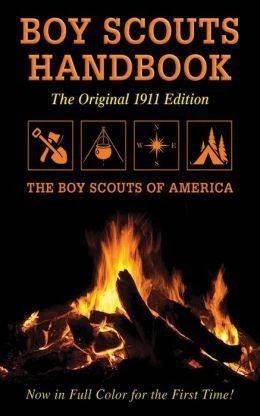Coleman began as a law student with bad eyesight but great vision that led him to becoming a household name with his inventive outdoor gear.
Success in any endeavor requires creative thinking, and countless American businesses have thrived because someone had the wit to think outside the box. The story, possibly apocryphal, about Ivory soap, is that somebody left the aerating machine on too long and whipped so much air into the stuff that it would actually float. Nobody in his or her right mind would pay for a bar with more air than soap, and Proctor & Gamble was faced with the prospect of throwing away their entire first batch. Then some bright guy came up with the slogan, “So pure it floats!” and generations of us grew up with Ivory. That’s thinking outside the box.
And sometimes, if someone thinks outside the box and also has a product that really works and is successful, the brand name becomes synonymous with that product. To many of us, the word “Coleman” means a lamp or possibly a cooler or a camp stove. It actually means a lot more than that, but it was, first, the name of a law student, with bad eyesight but great vision, and a knack for creative thinking.
It would be impossible for you, in today’s world, to recreate in your home the depth and quality of darkness that existed in homes before the ubiquity of electricity. Candlelight and coal oil lamps were the only options, and W. C. Coleman’s eyesight was so bad he frequently had to ask his classmates to read out loud to him.
So in 1900, when W. C. Coleman saw a new lamp throwing a brilliant light in a drugstore window, he went in to make inquiries and found he could read the small print on a medicine bottle. The light, so to speak, went on, and he decided to pay his tuition by selling these great new lamps in the bustling metropolis of Kingfisher, Oklahoma.
He bought a large amount of inventory, rolled up his sleeves and found he couldn’t sell a single lantern. An unscrupulous salesman with an inferior product had already been there and no one was in any mood to monkey about with any other kind of newfangled damn lamp.
The Original Arc Lamp
Undeterred, the resourceful Mr. Coleman shifted gears and, thinking outside the box, sold a lighting service instead of the lanterns themselves. His contracts (he was a law student, remember) included a “no light, no pay” clause, and customers began signing up.
In a remarkably short time his service expanded to cities as far west as Las Vegas and San Diego, and W.C. Coleman purchased the patents and inventory for the original lamp. Electric service was still iffy in urban areas and unavailable in rural ones, and after two years of servicing the lamps, he knew he could modify and improve on the original.
In 1903 W. C. Coleman began to manufacture his own lanterns under the name Coleman Arc Lamp. In 1909 he introduced the first portable table model, and in 1914 came out with the version of the lantern that made the Coleman name famous. It threw an unheard of 300-candlepower and effectively changed the rhythms of daily life in rural America. Farmers and ranchers were able to work longer hours (they have never forgiven W.C. Coleman), and the increased productivity was so great that in World War I the government declared the lamp an essential item. The Coleman factory turned out 120 lamps in 1909; in 1920 it turned out 50,000.
By the time the First World War ended, the automobile had ceased to be a novelty and become an affordable requisite. Roads were improving and expanding, the vacation business was booming and motor camping became fashionable, in part because accommodations were almost nonexistent and motels hadn’t been invented. What was invented, by the enterprising Mr. Coleman, was a two-burner, fold-up camp stove, and it and the lantern sold like the hotcakes cooked on his fold-up stove.
The Coleman GI Pocket Stove
But as America’s network of roads expanded and improved, so did the availability of electricity, and the need for the 300-candlepower lantern diminished. W.C.’s son, Sheldon, pushed for diversification, and the Coleman company began turning out various heating devices to survive the Depression. The company was said to have the largest number of lathes working west of the Mississippi, and after December 7th, 1941 most of them were busy churning out parts for B-17 and B-29 bombers.
But Coleman’s biggest contribution to the war effort came in response to a government request. It was the GI Pocket Stove, an ingenious little device that went into battle with American troops in Africa, Europe and the Pacific. Lightweight, no larger than a quart thermos, it could burn any kind of fuel and could operate in weather ranging from minus 60 to 125 degrees Fº. Coleman was able to develop a working prototype to government specifications in only 60 days and ramped up production to ship them with the troops.
The Coleman Galvanized Steel Cooler
After the war the Coleman company tapped into the expanding outdoor market and introduced their galvanized steel cooler in 1954, thereby completing the triumvirate of products still synonymous with their name. Only three years later they trumped themselves and revolutionized the industry by developing a process to make a plastic liner for coolers and jugs.
Today there is very little in the way of camping equipment the Coleman Company doesn’t make, from backpacking gear and canoes to tents big enough to qualify as a starter home. They still make a lightweight backpacking stove, a direct descendent of the GI stove, but they also make grills big enough and fancy enough to make Emeril Lagasse quiver with delight. Those original coolers have evolved into six-day coolers, cooler/freezer combos, marine coolers and thermoelectric coolers. And if you’re afraid of the dark, the company has a solution for that: It’s called a Coleman.
 This is a full-color edition of the very first Boy Scouts Handbook, complete with the wonderful vintage advertisements that accompanied the original 1911 edition, Over 40 million copies in print!
This is a full-color edition of the very first Boy Scouts Handbook, complete with the wonderful vintage advertisements that accompanied the original 1911 edition, Over 40 million copies in print!
The original Boy Scouts Handbook standardized American scouting and emphasized the virtues and qualifications for scouting, delineating what the American Boy Scouts declared was needed to be a “well-developed, well-informed boy.” The book includes information on: The organization of scouting, Signs and signaling, Camping, Scouting games, Description of scouting honors.
Scouts past and present will be fascinated to see how scouting has changed, as well as what has stayed the same over the years. Shop Now


